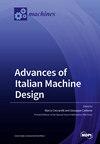Research on a Method of Robot Grinding Force Tracking and Compensation Based on Deep Genetic Algorithm
IF 2.1
3区 工程技术
Q3 ENGINEERING, ELECTRICAL & ELECTRONIC
引用次数: 0
Abstract
In the grinding process of complex-shaped cast workpieces, discrepancies between the workpiece’s contours and their corresponding three-dimensional models frequently lead to deviations in the machining trajectory, resulting in instances of under-grinding or over-grinding. Addressing this challenge, this study introduces an advanced robotic grinding force automatic tracking technique, leveraging a combination of deep neural networks and genetic algorithms. Harnessing the capability of force sensing, our method dynamically recalibrates the grinding path, epitomizing truly flexible grinding. Initially, in line with the prerequisites for force and pose tracking, an impedance control strategy was developed, integrating pose deviations with force dynamics. Subsequently, to enhance steady-state force tracking, we employed a genetic algorithm to compensate for force discrepancies caused by positional errors. This was built upon the foundational concepts of the three-dimensional model, impedance control, and environmental parameter estimation, leading to an optimized grinding trajectory. Following tracking tests, it was observed that the grinding’s normal force was consistently controlled within the bracket of 20 ± 2.5 N. To further substantiate our methodology, a specialized experimental platform was established for grinding complex-shaped castings. Optimized strategies were employed under anticipated forces of 5 N, 10 N, and 15 N for the grinding tests. The results indicated that the contact forces during the grinding process remained stable at 5 ± 1 N, 10 ± 1.5 N, and 15 ± 2 N. When juxtaposed with conventional teaching grinding methods, our approach manifested a reduction in grinding forces by 71.4%, 70%, and 75%, respectively. Post-grinding, the workpieces presented a pronounced enhancement in surface texture, exhibiting a marked increase in surface uniformity. Surface roughness metrics, originally recorded at 17.5 μm, 17.1 μm, and 18.7 μm, saw significant reductions to 1.5 μm, 1.6 μm, and 1.4 μm, respectively, indicating reductions by 76%, 73%, and 78%. Such outcomes not only meet the surface finishing standards for complex-shaped castings but also offer an efficacious strategy for robot-assisted flexible grinding.基于深度遗传算法的机器人打磨力跟踪与补偿方法研究
在复杂形状铸件的磨削加工过程中,由于工件的轮廓与其相应的三维模型不一致,往往会导致加工轨迹的偏差,从而出现过磨或欠磨现象。为了解决这一挑战,本研究引入了一种先进的机器人磨削力自动跟踪技术,利用深度神经网络和遗传算法的结合。利用力传感的能力,我们的方法动态地重新校准磨削路径,体现了真正的柔性磨削。首先,根据力和位姿跟踪的先决条件,开发了一种阻抗控制策略,将位姿偏差与力动力学相结合。随后,为了增强稳态力跟踪,我们采用遗传算法来补偿由位置误差引起的力差异。这是建立在三维模型,阻抗控制和环境参数估计的基本概念,导致一个优化的磨削轨迹。在跟踪测试后,观察到磨削的法向力始终控制在20±2.5 n的支架内。为了进一步证实我们的方法,建立了一个专门的实验平台来磨削复杂形状的铸件。在5 N、10 N和15 N的预期力下,采用优化策略进行磨削试验。结果表明,磨削过程中的接触力在5±1 N、10±1.5 N和15±2 N时保持稳定,与传统教学磨削方法相比,磨削力分别降低了71.4%、70%和75%。磨削后,工件表面纹理明显增强,表面均匀性显著提高。最初记录的表面粗糙度指标为17.5 μm、17.1 μm和18.7 μm,但现在分别降至1.5 μm、1.6 μm和1.4 μm,分别降低了76%、73%和78%。该结果不仅满足复杂形状铸件的表面精加工标准,而且为机器人辅助柔性磨削提供了有效的策略。
本文章由计算机程序翻译,如有差异,请以英文原文为准。
求助全文
约1分钟内获得全文
求助全文
来源期刊

Machines
Multiple-
CiteScore
3.00
自引率
26.90%
发文量
1012
审稿时长
11 weeks
期刊介绍:
Machines (ISSN 2075-1702) is an international, peer-reviewed journal on machinery and engineering. It publishes research articles, reviews, short communications and letters. Our aim is to encourage scientists to publish their experimental and theoretical results in as much detail as possible. There is no restriction on the length of the papers. Full experimental and/or methodical details must be provided. There are, in addition, unique features of this journal: *manuscripts regarding research proposals and research ideas will be particularly welcomed *electronic files or software regarding the full details of the calculation and experimental procedure - if unable to be published in a normal way - can be deposited as supplementary material Subject Areas: applications of automation, systems and control engineering, electronic engineering, mechanical engineering, computer engineering, mechatronics, robotics, industrial design, human-machine-interfaces, mechanical systems, machines and related components, machine vision, history of technology and industrial revolution, turbo machinery, machine diagnostics and prognostics (condition monitoring), machine design.
 求助内容:
求助内容: 应助结果提醒方式:
应助结果提醒方式:


